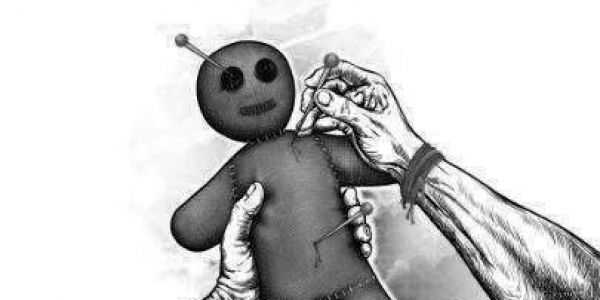Debendra Kumar Biswal
Chhattisgarh, Bihar, Jharkhand and Odisha have passed local Acts to deal with witchcraft. The specific Acts are: Chhattisgarh Witchcraft Atrocities Prevention Act, 2005; Bihar Prevention of Witch (Dain) Practices Act, 1999; Jharkhand Prevention of Witch Practices Act, 2001 and Odisha Prevention of Witch-hunting Bill, 2013.
However, these seem to be ineffective, given that cases of witchcraft are rising, particularly in tribal areas of the states concerned.
These special laws aim to criminalise witchcraft and to prosecute the accused under criminal or civil legislation. But are these laws and Acts strong enough to curb witchcraft? Several legal and human rights issues in the categorisation and prosecution of the ‘witches’ arise in this context.
A United Nations Report stated that in India more than 50,000 witch killings were recorded over the past 20 years and that the number was rising each year. The killings are often brutal and women suspected of witchcraft are often beaten, raped, tortured, maimed, forced to swallow human excreta, traumatised for life, imprisoned, or driven from their village and their property confiscated.
The special laws and Acts are toothless for three reasons: the definition of “witchcraft” is narrow; penalties and punishment are weak and modern law does not accommodate categories of harms from witchcraft.
A strong or common definition of witchcraft is absent from legal doctrines. For instance, Odisha Prevention of Witch-hunting Bill, 2013, defines a “witch” as a woman identified by any person or persons believing her to be in possession of, or having evil power that causes harm to persons or property. Women can be identified as witches by anybody based merely on his/her belief.
In the absence of a broad definition, some problems arise: First, the application of the law may be arbitrary and belief of the individual judge or enforcement officer would prevail; second, it may target a particular section of the society, such as women or practitioners of traditional medicine.
Also, the special Acts promulgated by states prescribe for lenient punishment for offences under them compared with the IPC, which creates conflict between the two. The laws also place the burden of proof on the victim. The special laws have only 4-5 provisions that criminalise acts of ‘identifying’ (Bihar and Jharkhand state laws) and ‘exhibiting’ (Chhattisgarh state law) any person as a witch, along with the mental and physical torture accompanying such identification. These carry small sentences although the offences are non-bailable.
In the absence of strong deterrent in any special legislation, the only alternative available for the victim to seek justice is the IPC. Such cases draw action under sections 302 (murder), 307 (attempt to murder), 323 (hurt), 376 (rape) and 354 (outraging a woman’s modesty), among others. However, invoking these provisions have the following lacunae: First, the victims in such cases have little or no access to the law or the police, mainly because of their social, geographical and educational background; second, since this crime is socially manifested, out of either fear or acceptance of the practice, people prefer to remain silent, which makes investigation difficult; finally, the punishment granted mostly is for hurt, which merely extends up to 1 year with a fine of Rs 1,000.
Contemporary studies in the tribal areas of India have found several ill-effects of witchcraft. Women are tarnished as witches for several reasons; often women are accused of causing illness or death, or a bad harvest as she may have refused sexual advances or challenged the authority of community elders. Mostly widows are targeted as witchcraft offers an easy excuse for violence to dispossess them of property.
Legislation that criminalises witchcraft must define “witch”, “witchcraft” and “Witch-hunting” in a concrete way in consultation with the anthropologists and religionists. Otherwise the law and Acts may be potentially harmful to those accused of witchcraft and may violate human rights. Strong ‘harmonisation’ of the formal court system and the use of traditional fora such as traditional or customary courts with their own processes and evidence requirements should be encouraged to deal with witchcraft in tribal society.
The writer is an assistant professor, Department of Contemporary and Tribal Customary Law, Central University of Jharkhand.






































